General Guide to TV Aerials
Index
- Terrestrial TV Aerials
- Overview
- What channels can I get on a TV Aerial ?
- Selecting the correct TV aerial equipment
- Overview of VHF / UHF Bands
- Overview of VHF / UHF Aerials
Links to USER GUIDES on:
- Selecting & Installation guide for Aerial and Distribution kits
- How to mount a bracket for an aerial
- How to assemble a TV aerial
- How to - Amplification and Distribution
*************************************************************
1. TERRESTRIAL TV AERIALS
1.1 Overview
Currently in Ireland the dominant broadcasting format for Terrestrial TV is analogue. However the the new Digital Terrestrial Tv (DTT) is now up and running in test mode and the plan is to turn off the analogue signal by 2012 (though this scheduled shut down will probably slip back to 2013 or later).
If you plan it properly is it possible to install an aerial system which is compatiable with both analogue and digital. Indeed with certain transmitters such as Carin Hill the aerial used by the current analogue system is identical to that used for the digital signal.
As the new DTT service is only using the UHF band aerial selection and installation is generally cheaper and easier than with the old Analogue system where most transmitters used both VHF and UHF requiring 2 aerials to be installed.
1.2 What channels can I get with a TV Aerial ?
On the analogue system in Ireland it is possible to get to receiver the 4 Irish Channels:

On the new DTT digital service currently the only additional channel available is the RTE news channel:
![]()
However when DTT services is full rolled out it is expected that a range of additional free-to-air and pay-per-views will become available.
1.3 Selecting the correct TV Aerial Equipment
Given below are the basic series of steps to selecting a digital aerial system.
Given below are the basic series of steps to selecting a digital aerial system.
![]()
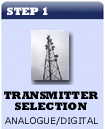
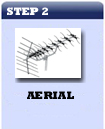
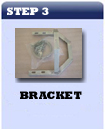

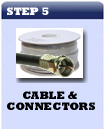
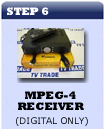
As you can see the starting point is determine which is the best transmitter to. Use the Analogue / Digital transmitter maps to to identify the closest transmitter. However local geography (a hill in the way) or cost (some transmitters require 2 aerials while others only require one) can effect your choice.
2. Overview of VHF / UHF Bands
In the following tables, an overview is given on the different bands on which TV signals are transmitted the type of aerials that are suited to each of those aerials. table below lists the frequency range used in the broadcasting on UHF and VHF
|
Table 1: showing the VHF/UHF frequency range |
||
|
Band |
Freqeucny Range |
Channels |
|
VHF I-III |
47-230 MHz |
E2-12 |
|
UHF IV-V |
470-854 MHz |
E21-E68 |
In Ireland analogue tv transmissions use both VHF III and the UHF spectrum.
Table 2: Frequencies used by Digital TV transmissions
Band
Freqeucny Range
Channels
VHF I-III
47-230 MHz
E2-12
UHF IV-V
470-854 MHz
E21-E68
The new digital tv services uses only the UHF band
Table 3: Frequencies used by Analogue TV transmissions
Band
Freqeucny Range
Channels
UHF IV-V
470-854 MHz
E21-E68
3. Overview of VHF / UHF Aerials
The final table in this sections shows the type of aerials that cover the VHF III and UHF spectrum. It also contains links to the relevant aerial page which has detailed information on each aerial.
Table 4: Type of aerials to cover Different Bands Band Channel
Best Aerial
Alternate Aerial
VHF III 5-12
VHF 7 Element
VHF 4 Element
UHF - A
21-37
UHF contract A
Grid or Contract WB
UHF - B
35-53
UHF contract B
Grid or Contract WB
UHF - C/D
48-68
UHF contract C/D
Grid or Contract WB
UHF - WB
21-68
Grid Aerial
Grid or Contract WB



